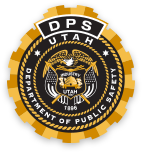Flood insurance FAQs
How much does flood insurance cost and how do I buy it?
Flood insurance is relatively inexpensive, especially if you do not live in an identified flood hazard area. If you live in a flood hazard area, depending on the amount of coverage you get, flood insurance costs around $425 a year or $35 a month.
Contact 1-800-427-4661, for a referral to an agent who sells flood insurance in your community.
Flood impact tools and resources
How can I get a copy of a flood map?
You can call your local planning and zoning office, or visit the FEMA Flood Map Service Center online.
When will FEMA update the flood maps?
Funding is always an issue with updating the flood maps. FEMA is working on getting more money to update the nations flood maps through the Map Modernization Program. This program would allow the state to map communities. As of March 2003, Congress appropriated money for this mapping effort. How and when that money will come to the State of Utah is uncertain. Currently, FEMA makes a mapping priority list each year and contracts with engineering firms to map the top mapping priorities for six states in our region. Requests to be considered for remapping can be made to the Barbara Fitzpatrick (FEMA Region VIII, Utah Representative) 303.235.4715.
How can I update a flood map or correct an error in a flood map?
If you feel you have been inaccurately placed in a flood hazard area, there are ways to challenge the current map designation. If a map error has occurred, the Letter of Map Amendment (LOMA) process will allow you to supply elevation information to FEMA to get out of the floodplain designation and wave the mandatory purchase requirements for flood insurance. It will take approximately six weeks for FEMA to review your information and write you back. Forms can be downloaded from FEMA.
If a structural change to the floodplain has occurred, such as an enlarged culvert or detention basin, then a Letter of Map Revision (LOMR) can be completed. LOMRs are more detailed and take about a year to complete. You can call the state floodplain manager for more information on both LOMAs and LOMRs, at
801.538.3332.
What kind of grants are available for flood hazard mitigation plans and projects?
There are two types of grants available under the Flood Mitigation Assistance Program. One is a planning grant that allows your community to identify flood hazards and structures at risk for flooding. Grants are competitive and require a 75/25 cost share match. Plans must follow certain FEMA criteria and be completed within the year. The other grant is a project grant allowing small mitigation projects that reduce the flood risk to nearby insurable structures. An approved plan must be completed before project grants can be awarded. Project grants also have the 75/25 cost share match and have a two year complete date requirement. An environmental clearance will be conducted for each project grant. Contact the state floodplain manager for more information at 801.538.3332
Where can I get a list of communities in Utah that participate in the NFIP?
There are 186 communities in Utah that participate in the NFIP, to see if your community is one of them, you can visit the FEMA Website or contact your local planning office.
What does a community have to do to participate in NFIP?
Participation in the NFIP is based on an agreement between the community and the Federal Government. The agreement states that if a community will adopt and enforce a floodplain management ordinance to reduce future flood risks to new construction in Special Flood Hazard Areas (SFHA), then the Federal Government will make flood insurance available within the community. The initial phase of a community’s participation in the NFIP is the Emergency Phase. During this phase, a limited amount of insurance is available at less than actuarial rates, and the community needs to adopt limited floodplain management requirements to control future construction in the floodplain. FEMA periodically converts the communities from the Emergency Phase to the Regular Phase. A community enrolled in the Regular Phase almost always has a Flood Insurance Rate Map (FIRM). The community is required to adopt a comprehensive floodplain ordinance, and is eligible to receive higher amounts of flood insurance coverage.
